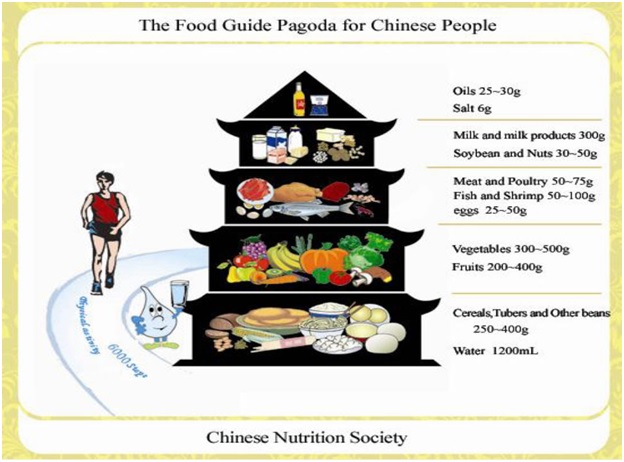
Food pagoda of China
China promulgated her first food based dietary guidelines (FBDGs) in 1989. It was proposed by the standing board of Chinese Nutrition Society. The new edition of “Guide on Diet for Chinese People” released in January 2008. In this guide there are five levels in the food pagoda, indicating the different levels of importance and the amount we need in daily diet. What the pagoda suggests is an average intake of different foods. As long as the average amount meets the requirement, it is a balanced diet good for health.
- Grains, potatoes, beans and water are the fundament. An adult need 250-400 grams of grains, potatoes and beans and 1,200ml water every day.
- Vegetables and fruits are the second important, with a daily demand of 300-500 grams of vegetables and 200-400 grams of fruits. Meat, fish, shrimp and eggs take the third – 50-75 grams of meat, 50-100 grams of fish and shrimps, 25-50 grams of eggs for every day.
- Then comes the demand of 300 grams of dairy products and 30-50 grams of nuts and soybean products. Oil and salt are at the top with the least demand of 25-30 grams and 6 grams respectively for each day.
- The guide also suggests dark-color vegetables take half of the vegetable intake every day as they are rich in carotene and vitamin A.
Author: Sumana Rao | Posted on: January 8, 2016






















Write a comment